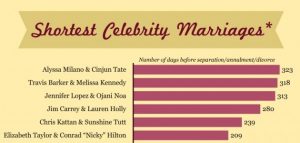If I think about the brands I’ve been working with or consulting in the last few years, the majority of them in the B2B tech space, short-term sales activation (or lead gen, as we B2B marketers are used to call it) has always been the first priority.
Enterprises invested most of the money in the short-term, bottom of the funnel campaigns — and related content — in the hope of lifting sales for the next few quarters.
I had a similar priority when I led marketing for division of a large enterprise in the field of Energy.
The brand was not a focus. Short-term activation campaigns and sales programs were successful in most of the cases. At least, this is what I (and most marketers) thought.
The latest research of Les Binet and Peter Field, Effectiveness in Context, analyses hundreds of campaigns of the IPA Databank, with a focus on marketing effectiveness.

According to Binet and Field, marketing effectiveness is in decline, and “short-termism” is, in many ways, the mother of all marketing problems.
What exactly happened?
As I have mentioned, marketers are increasingly short-term in their focus. They spend money on immediate sales activation rather than longer-term brand building. They opt for bottom of the funnel tactics because they will pay better in most cases in one year.
But in one of the most important sections of their research, Field and Binet demonstrate that over the longer term, this short-termism will rapidly deteriorate the overall impact of marketing.
Too much time spent picking the low-hanging fruit means less time watering the tree. Eventually, the tree stops growing.

Also, distracted by a continuous flow of short-term data, marketers won’t realize that something eventually will go wrong. And when they will, it could be too late.
There are additional notable discoveries mentioned on the latest research:
- online brands tend to pursue short-term sales activation effects more than offline brands because of the availability of clients;
- brands in high online research categories (financial services, durables, etc.) tend to follow online brands and pursue short-term sales activation effects because it’s easier to activate responses;
- marketers in subscription-based selling brands (e.g., mobile network operators, software brands) diverted expenditure from brand-building comms.
Based on my experience, I would add that most of the B2B tech brands tend to prioritize short-term strategies because of the easier availability of clients online.
“The digital revolution tends to leading to increased activation efficiency, and so a higher proportion should go to brand. It seems paradoxical, but what’s happening in the digital world means you need to build that brand even more,” Binet says.
“Online brands that sell or reach online need a higher percentage of their spend going to brand building because they already have direct channels to conversion. Digital realization is leading to increased distribution efficiency, so more emphasis needs to be on brand.”
Same for brands in high online search categories, same for tech brands, same for financial subscription-based brands, same for all enterprises that have neglected long-term brand awareness strategies.
Consequently, content creation has focused mainly on bottom of the funnel and product (or service)-focused content to support short-term sales activation programs.
In most of the cases, a solid and documented content strategy was even not requested and not in place. You don’t necessarily need a content strategy for executing short-term sales activation campaigns.
Now, Field and Binet advise a combined brand awareness and sales activation strategy, in order to reach the maximum of marketing effectiveness.
They advise a 60/40 split for optimum impact across many different categories, which means you are supposed to invest at least 60% of your budget in long-term brand awareness and 40% on more immediate sales activation.
And there may be variance in this balance from sector to sector. For instance, the financial sector is the one where brand building is more important.

“Brand communications create enduring memory structures that increase the base level of demand and reduce price sensitivity. Sales activation triggers these memories and converts them efficiently into immediate sales.“, Binet says.
Brand building and sales activation are not choices or alternatives — they are mutually interdependent, and both are essential to long-term success.
The authors explain that sales activation style marketing is about growing physical availability, and is best served by tight targeting and relevant messages.
In contrast, brand building is about increasing consumers’ mental availability for your brand and is driven by broad reach, stories, emotions, and associations.

The ideal scenario would be executing integrated brand awareness and sales activation programs. And here is where content strategy and tactics as storytelling will come into play.
Top of the funnel content and storytelling will fuel brand awareness and its need to build enduring memories; medium and bottom of the funnel content will feed the immediate need for sales activation programs.
The money is in the memories — and content is at the core of them.







